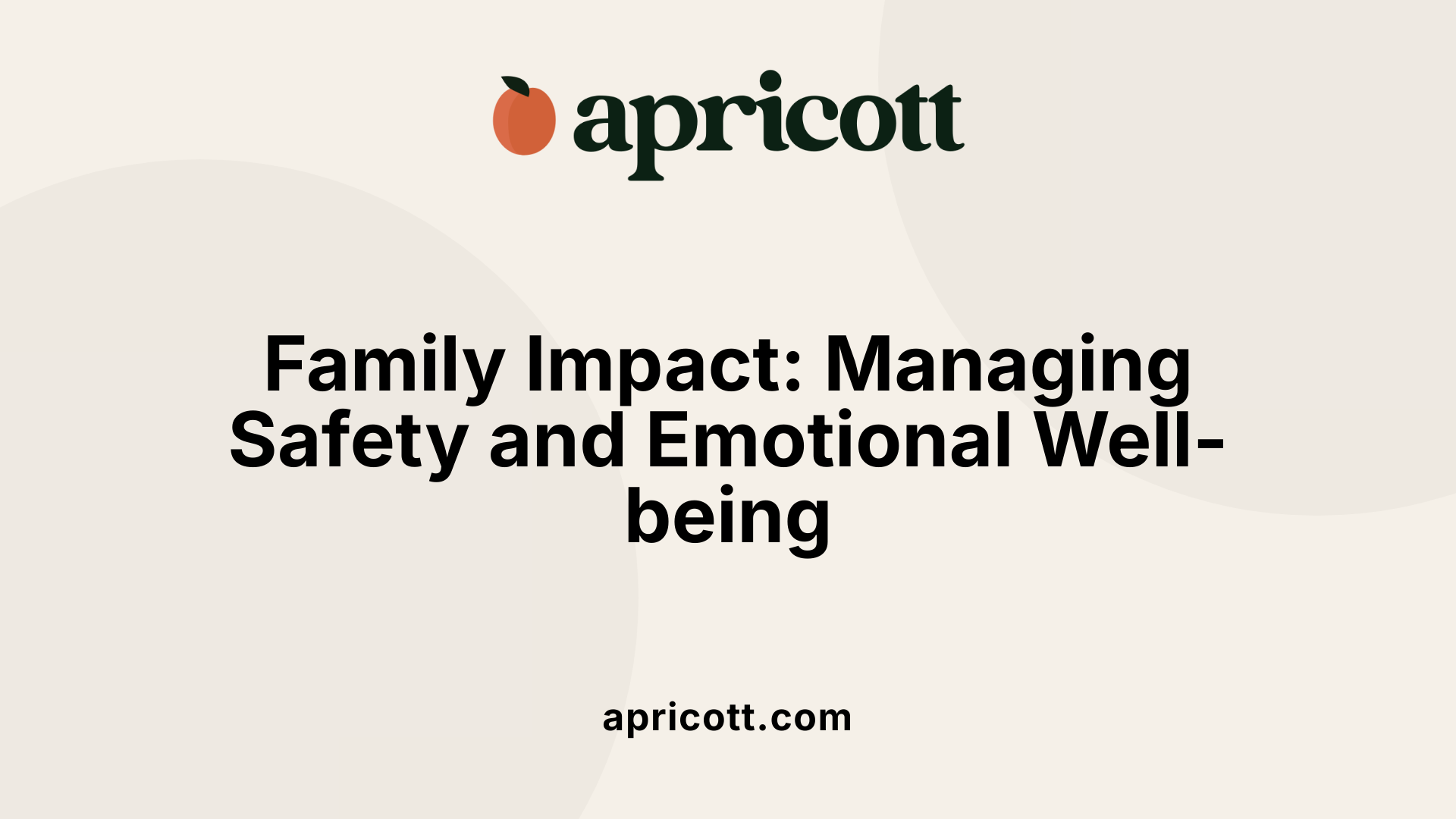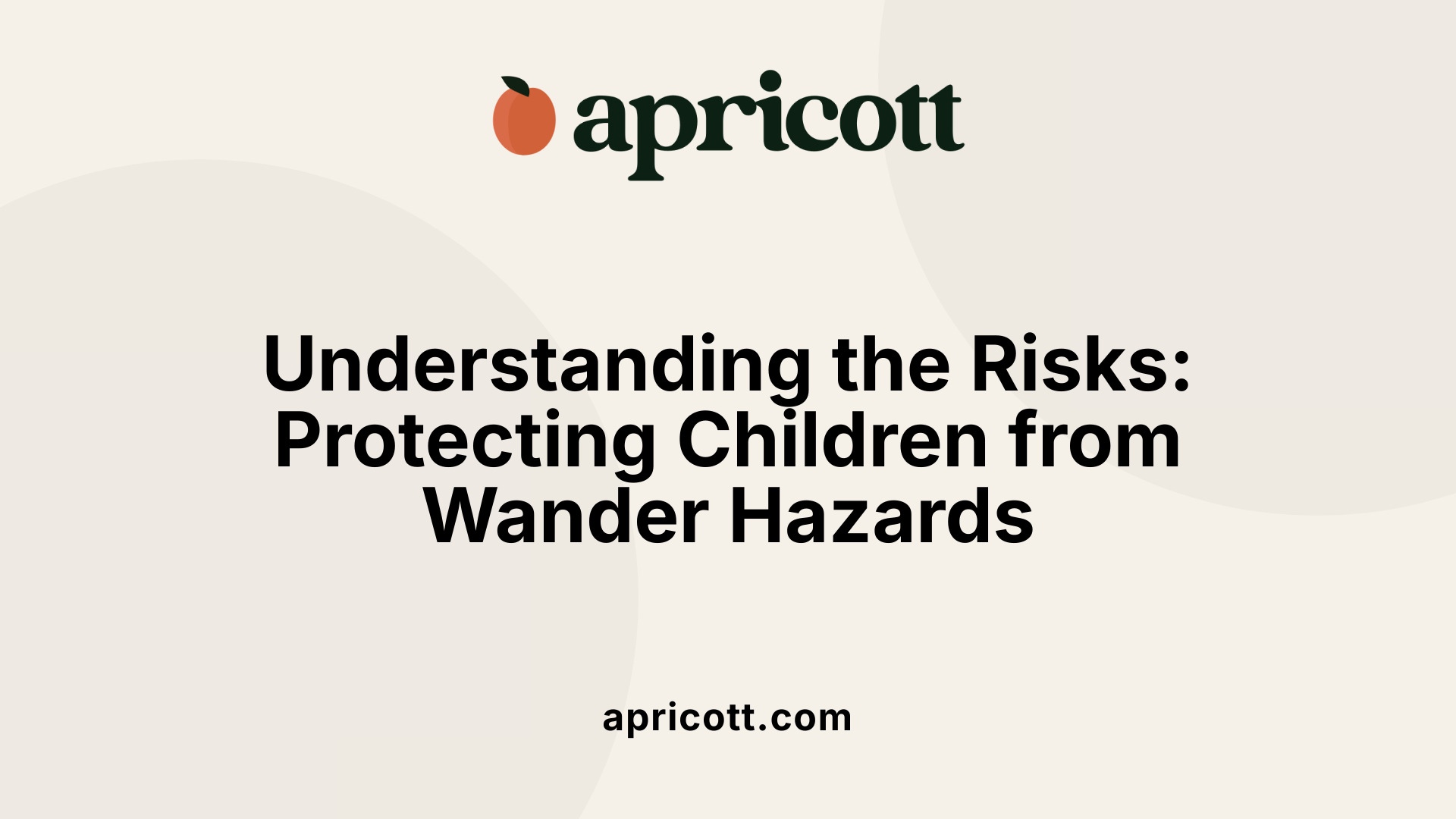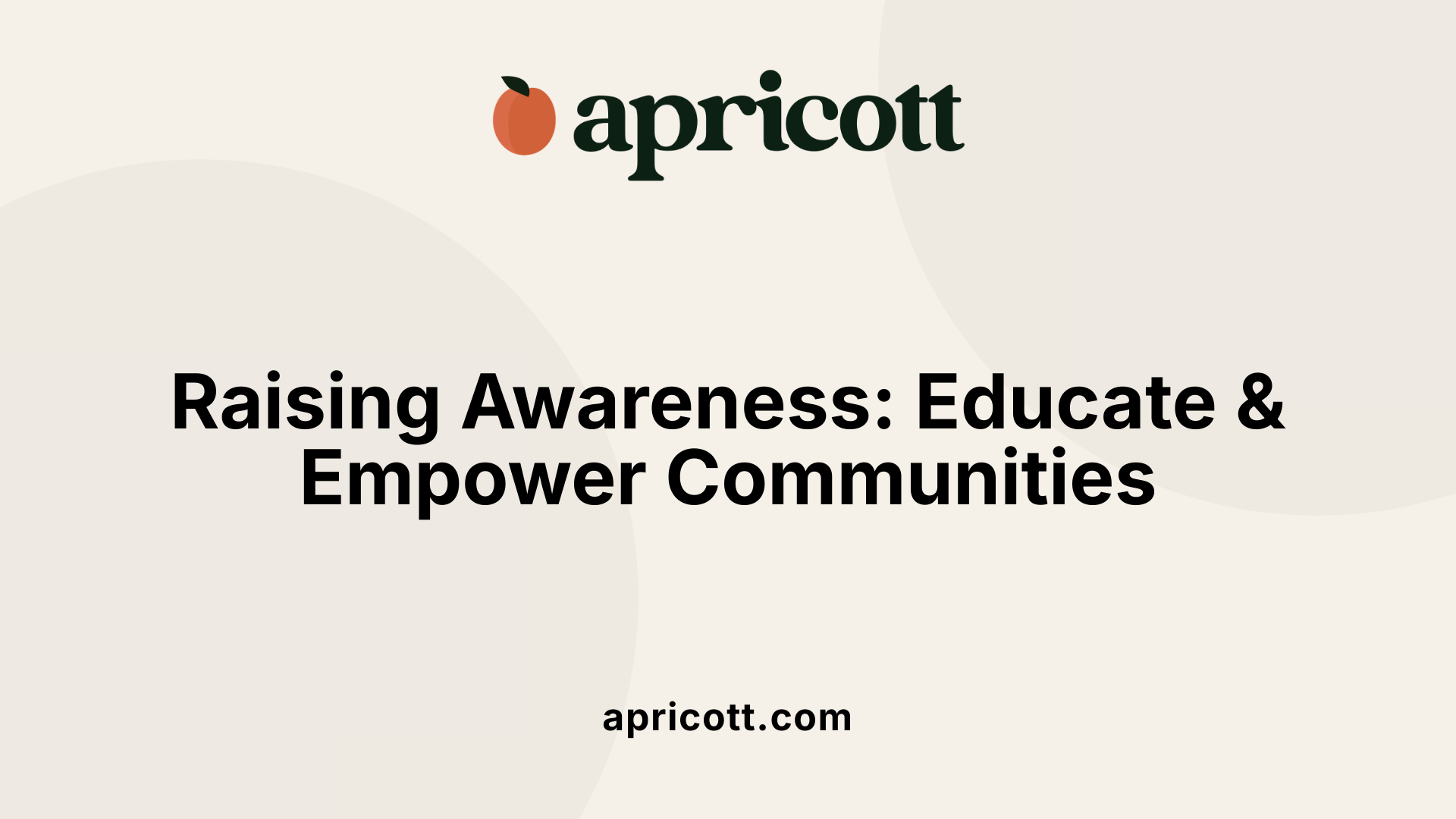July 18, 2025
Navigating Safety Challenges in Autism Behavior
Elopement, often referred to as wandering, is a common yet complex behavior among children and individuals with autism spectrum disorder (ASD). It involves leaving a safe, monitored environment without permission, often without warning. This behavior poses significant safety risks including drowning, traffic injuries, and other dangers. Recognizing the causes, prevalence, and preventive strategies is crucial for caregivers, educators, and communities dedicated to safeguarding individuals with autism from harm.
Autism elopement, often called wandering, involves a person with autism running away from a safe or supervised area without permission or warning. This behavior poses serious safety risks, including injury and drowning, which unfortunately is the leading cause of death among children with autism.
Elopement can happen for various reasons. Children or adults may wander because of sensory overload—when too much sensory input becomes overwhelming—they might bolt to escape the situation. Others may experience a fight-or-flight response, especially when they feel scared or stressed, leading to sudden running away.
Curiosity also plays a big role. Many individuals with autism are naturally curious about their environment and may wander to explore or reach a preferred place, activity, or object. Communication difficulties can make it hard for them to express their needs or fears, which might result in fleeing as a way to seek help or avoid discomfort.
Understanding these triggers is crucial for developing effective prevention strategies. These include vigilant supervision, securing home exits with locks or alarms, using wearable GPS tracking devices for quick location, and teaching safety skills. Creating a safe environment and enhancing communication skills help reduce the instances of elopement, protecting children from dangerous situations like traffic and water hazards.
Many children with autism exhibit wandering behaviors, which are often referred to as elopement or walking away from safe environments. Studies indicate that about 49% of children with autism attempt to run away or wander at least once after the age of four. This high percentage means nearly half of children with ASD are involved in wandering behaviors, making it a significant safety concern for families and caregivers.
The age range most affected by elopement tends to be between 4 and 11 years. For example, 46% of children with autism aged 4-7 engaged in wandering, and 27% aged 8-11 did so, which is substantially higher compared to unaffected siblings—only about 1% in the same age group.
Children with more severe autism symptoms, lower communication skills, and cognitive challenges are at greater risk of wandering. Specifically, those with higher autism severity scores are about 9% more likely to elope with every 10-point increase on the Social Responsiveness Scale (SRS).
The dangerous implications of wandering are well-documented. Children who wander face a 160 times greater risk of drowning compared to neurotypical children. Additionally, 65% of children who went missing due to wandering faced potential traffic injuries, and many were found to be at risk of dehydration, hypothermia, or injury from environmental hazards.
Compared to unaffected siblings, children with autism are significantly more prone to wandering, emphasizing the importance of targeted safety strategies. The tendency to wander peaks around age 5.4 years, though it can occur at any age, often multiple times a day.
Understanding these statistics is crucial in developing preventative measures, community awareness, and emergency response plans to protect children with autism from harm caused by wandering behaviors.

Elopement, or wandering, has far-reaching consequences for both children with autism and their families. Safety risks are the most immediate concern. Children with autism who elope are at a much higher risk of drowning—an issue responsible for a significant percentage of accidental deaths in this group—and traffic injuries. Studies indicate that about 24% of missing children with autism face potential drowning dangers, and overall, the risk of injury is substantially greater than for neurotypical children.
Besides physical dangers, elopement creates considerable emotional stress. Many families report that managing this behavior causes sleep disturbances, limits outdoor activities, and leads to constant vigilance. About 56% see elopement as one of their most stressful behaviors, often feeling ill-prepared because they receive little guidance on preventing or responding to it.
The motivations behind elopement are diverse, often goal-directed. Children may wander to reach specific places, explore unfamiliar environments, escape from stressful situations, or obtain objects or attention. As children grow older or experience increased severity of autism symptoms, the likelihood of eloping tends to rise, adding to parental anxiety.
Overall, elopement introduces serious safety risks and causes substantial emotional, physical, and logistical challenges for families. Recognizing these impacts underscores the importance of effective prevention strategies and safety planning to protect children with autism.

Preventing elopement requires a combination of environmental modifications, behavioral strategies, and safety education tailored to each child's needs. Caregivers should start by securing the home environment: installing locks on doors and windows at higher levels or those difficult for children to reach, using safety alarms, and adding fencing around yards. Using visual aids, such as window clings or signage indicating safety rules, can also be helpful.
Implementing wearable GPS devices, like smartwatches, Apple AirTags, or Tile trackers, allows for quick location of a wandering child. ID bracelets or tattoos with contact information can facilitate immediate identification if a child is found wandering.
Behavioral interventions play a significant role in elimination of wandering triggers. Techniques like Applied Behavior Analysis (ABA) and Functional Communication Training (FCT) help address underlying reasons such as attention-seeking, sensory-seeking, or escape behavior. Teaching safety skills—including water safety, how to cross roads safely, and communication skills—empowers children to respond appropriately in dangerous situations.
Creating a comprehensive safety plan—the Safety Planning Cycle—ensures ongoing preparedness. This plan involves regular updates, coordination with neighbors, community helpers, and emergency responders, and developing personalized checklists and alert systems. Engaging with community resources, like local police or fire departments, increases response effectiveness.
Supervision remains paramount; active monitoring during outings and at home reduces risks. Introducing children to trusted community helpers fosters familiarity and quick assistance if needed. Maintaining open communication among caregivers, educators, and family members ensures everyone is informed about safety strategies. When combined, these approaches create a layered safety net that significantly reduces the risk of wandering and enhances the child's safety.

Elopement in children with autism presents serious safety risks that can have life-threatening consequences. The most alarming danger is drowning, which accounts for approximately 71% of fatalities related to wandering among autistic children. Studies show that the risk of drowning in this population is about 40 times higher than among neurotypical children. In addition to water-related accidents, traffic injuries are another major concern, responsible for around 18% of wandering-related deaths. Children can also face other hazards such as falls from heights, exposure to extreme weather conditions, dehydration, hypothermia, encounters with strangers, and getting trapped in unsafe environments.
The behavior of wandering may be driven by various motives, including curiosity, escape from stressful situations, sensory-seeking activities, or pursuit of favorite places. As autism severity increases, so does the likelihood of elopement, raising the risk of these dangerous outcomes. Despite the prevalence of these risks, many families report receiving limited guidance on how to prevent wandering effectively. Implementing preventive strategies such as securing home exits with locks and alarms, teaching safety skills, and creating emergency response plans are essential steps to protect children. The combination of medical, behavioral, and environmental safety measures aims to reduce the frequency and severity of these hazardous incidents.
Caregivers of children with autism have access to a variety of resources and guidelines designed to prevent and respond effectively to wandering incidents. Notable organizations like the Autism Wandering Awareness, Alert, Response, and Education (AWAARE) Coalition offer educational materials that raise awareness and provide practical strategies for safety.
Practical tools include safety plans tailored to each child's needs, which encompass securing home exits with locks, alarms, and fencing. The implementation of GPS tracking devices such as smartwatches, Apple AirTags, Samsung SmartTags, or Tile trackers can significantly aid in locating a wandering individual quickly.
Educational materials like the Big Red Safety Tool Kit and social narratives help children understand safety rules and prepare them for emergency situations. Collecting data on previous wandering incidents and developing personalized safety plans—incorporating contact information, neighborhood checklists, and emergency contact forms—are vital steps.
Caregivers are also advised to educate neighbors and first responders about their child's wandering risks. Enrolling children in swimming lessons and teaching water safety further reduces drowning risks, which are a leading cause of injury among autistic children.
Overall, combining environmental modifications with behavioral interventions—such as functional communication training—and maintaining constant vigilance forms a comprehensive approach to safeguarding children with autism from wandering behaviors.

Managing elopement in children with autism requires a blend of both behavioral therapies and environmental adaptations. Behavioral interventions like functional communication training (FCT) teach children to express their needs and reduce the impulse to wander. Visual cues and social narratives help prepare children for safety procedures, making them more aware of danger and safe behaviors.
Creating a safe environment is crucial. Installing physical barriers such as window locks, door alarms, and fencing around the yard can significantly prevent unsupervised escape. These measures are often cost-effective and straightforward to implement.
Technological tools, including GPS tracking devices like smartwatches or trackers such as Tile or Apple AirTags, provide additional security. These devices can alert caregivers when a child is wandering, enabling quick responses. However, their use is less widespread due to costs and conflicting evidence about their long-term effectiveness.
Community collaboration plays a vital role. Establishing safety networks with neighbors, local law enforcement, and first responders helps facilitate rapid assistance in case of elopement. Emergency preparedness involves creating personalized safety plans, maintaining updated contact information, and training caregivers and community members.
While medications are sometimes used, evidence suggests they have limited impact on reducing elopement behaviors. Therefore, behavioral and environmental strategies remain the primary focus for effective management.
This multi-layered approach ensures children are protected while promoting their development and independence through tailored interventions and safety measures.
 Raising awareness about autism elopement involves a collaborative effort from caregivers, professionals, and the wider community. Educating these groups about typical exit-seeking behaviors, early warning signs, and safety strategies is crucial.
Raising awareness about autism elopement involves a collaborative effort from caregivers, professionals, and the wider community. Educating these groups about typical exit-seeking behaviors, early warning signs, and safety strategies is crucial.
Caregivers can access helpful resources such as the Autism Safety Kit, which contains checklists, emergency plans, and alert forms designed specifically for wandering prevention. Distributing these tools and participating in educational programs offered by organizations like the AWAARE coalition can significantly increase understanding.
Community engagement plays a vital role. Neighbors, teachers, and first responders should be informed about the dangers of wandering and typical behaviors indicating a child might elope. Workshops, community meetings, and informational materials can foster a more responsive environment.
Practical safety tools such as GPS locators, ID bracelets with contact information, and home security measures like alarms and fencing can be implemented easily. Training caregivers and community members on how to recognize early signs of wandering—such as fleeing when upset or seeking water—is essential for prompt intervention.
Creating a safety-oriented community involves continuous education, resource sharing, and collaboration. By promoting awareness and equipping all involved parties with the right tools and knowledge, we can better protect children with autism from wandering risks and reduce the incidence of related tragedies.
Understanding and addressing autism elopement requires a comprehensive approach involving prevention, education, and community support. Implementing safety measures, teaching safety skills, and fostering awareness can dramatically reduce risks and support the well-being of children with autism and their families. Continued research and resource development are essential to evolving strategies and ensuring that no child is left vulnerable to harm due to wandering behaviors.